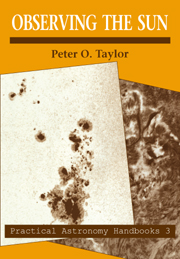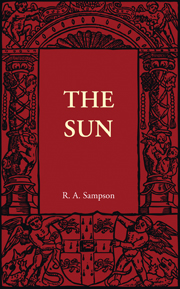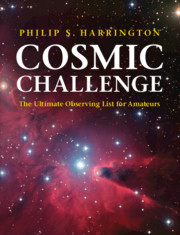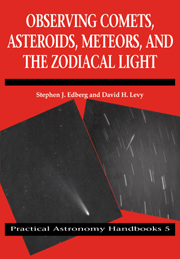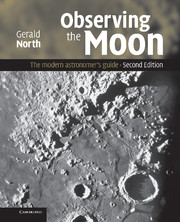Observing the Sun
Observing the sun is one of the most interesting and rewarding facets of astronomy to which amateurs can contribute meaningful data. It is the one branch of astronomy that requires only modest equipment and that can be pursued during the day.
Peter Taylor, long-time chairman of the Solar Division of the American Association of Variable Star Observers, is a keen and highly experienced observer of the Sun. In this book he explains in a clear and practical way everything that a telescope user needs to know in order to make solar observations. The book deals with such topics as the historical background of solar observing, choice of equipment for the safe conduct of solar observations, observations of sunspots, and reporting observations. New techniques, such as electronic recording and the operations of radio telescopes, are also included. The level of presentation is understandable to anyone with basic astronomical knowledge and some experience in handling a small telescope.
- Unlike other books, it delves into the subject of solar observation with real depth and in a practical way
- Armed with this book amateur astronomers can contribute to astronomy
Reviews & endorsements
"...contains a great deal of valuable information, for both the serious student and hobbyist." Donald F. Trombino
"This unique book is an appropriate addition to any library used by trained astronomers, amateur or professional." A.R. Upgren Jr., Choice
"...aimed at guiding the would-be amateur solar astronomer into the lore of the subject. It proves to be an excellent guide, and one that the professional solar observer would enjoy too." Bernard Roberts, Times Higher Education Supplement
"...The text is substantive and intended for the serious, committed, capable amateur." Griffith Observer
Product details
March 2008Paperback
9780521056366
176 pages
243 × 171 × 10 mm
0.292kg
53 b/w illus.
Available
Table of Contents
- Preface
- Introduction
- Historical perspective
- 1. The relative sunspot number
- 2. Characteristics of the sunspot-cycle
- 3. The Zurich and Mount Wilson sunspot group classifications
- 4. Common terrestrial effects
- 5. Equipment: the telescope, aperture filters and image projection
- 6. Image orientation
- 7. Observing the Sun's spots and other solar phenomena
- 8. Using a Porter disk to determine heliographic positions
- 9. Observing solar white-light flares
- 10. Detecting solar flares electronically
- 11. Constructing a solar flare monitoring station
- 12. Computation of observer statistical factors and other equations
- 13. Solar eclipses and the amateur astronomer
- References
- Index.

